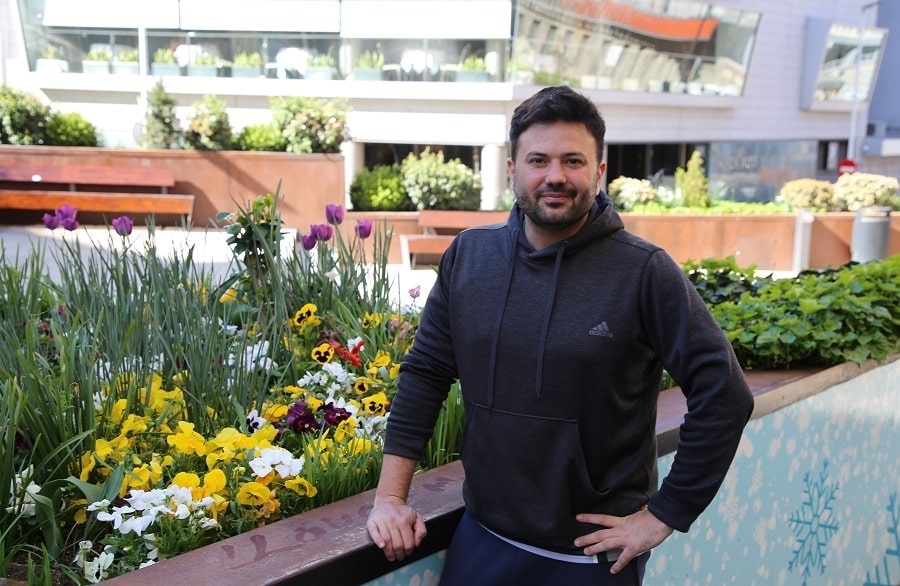 Former General Counselor of Andorra’s mixed parliamentary group, SDP (Party of Progressive Social Democrats of Andorra) and professional architect Victor Naudi Zamora left politics aside a few years ago and devoted himself entirely to architecture. Today he manages his own bureau Naudi Arquitectura. We talked with Viktor about the history of Andorran architecture, and its evolution, and asked his opinion about some of the modern architectural projects of the Principality:
Former General Counselor of Andorra’s mixed parliamentary group, SDP (Party of Progressive Social Democrats of Andorra) and professional architect Victor Naudi Zamora left politics aside a few years ago and devoted himself entirely to architecture. Today he manages his own bureau Naudi Arquitectura. We talked with Viktor about the history of Andorran architecture, and its evolution, and asked his opinion about some of the modern architectural projects of the Principality:
“In the past, as in all the mountain villages of the Pyrenees, the houses in Andorra followed a similar pattern. We are talking about stone-made constructions, either grouted with mud, with wooden floors or slate roofs on a pine wood structure. It is said that the materials of the place were used because they were the only ones available.
A traditional house usually consisted of a ground floor, a first floor and a basement (sota coberta – cat.) known as ¨head of the house¨. Often next to the house was a corral for cattle. In the houses of more modest families, the corral where the animals were kept was often on the ground floor of the house.
For reasons of rationality, the buildings were on the sunny slopes of the valleys, usually elevated, protected from wind and geological hazards. The houses often rested on the rocks to free up the fields and pastures of the valley.
Given the composition of the materials, their typology was very uniform and only the differences stood out depending on their size. Houses had balconies and facades finished with plaster painted white or without, depending on whether it was a house rich or poor.
The most populated and therefore most important nuclei had the main street that connected the different villages, in which the horse-drawn carts circulated. The inner streets used to be sloping and narrow.
The only buildings that stood out were the churches and chapels depending on the importance of the village. In this case, the Romanesque style characterized the architecture. This style has its origins in the eighth and thirteenth centuries.
The construction system of the traditional Andorran house responded to the way of life that for centuries was perpetrated until the nineteenth century, based on a mostly agricultural and livestock economy.
The first changes took place at the end of the nineteenth century with the appearance of the tobacco, wool and leather industry, which saw the construction of larger industrial-style buildings of the time, especially in Escaldes and Sant Julià de Lòria. The style of these factories was more avant-garde due to the search for master craftsmen abroad, but with a Catalan influence.
At the beginning of the twentieth century, some symbolic buildings were built in Andorra la Vella, Sant Julia de Loria and Escaldes. Their architecture was the first to use granite with framed windows and attic roofs. Disciples of Puig i Cadafalch or even Gaudí, among others, built some of these buildings.
The second major change occurred between 1930-1935 with the creation of FHASA (Fuerzas Hidroeléctricas de Andorra), under which, in exchange for ceding part of the country’s waters for electricity generation, the company widened the main roads and built several buildings.
During this period, many people arrived in the Principality for work. Among them were refugees fleeing the Spanish Civil War.
From that moment in Andorra there was a demand for housing. Actually, it led to the beginning of the construction of a new urban fabric located along the main roads of the populated areas.
Then, after the end of the Second World War, hotels began to be built, especially in Escaldes, where the thermal water was exploited for therapeutic and relaxation purposes.
At the same time, the Ràdio Andorra, a granite stone building, was built. It broadcast advertising in the north of Spain and in the south of France but especially considering that there was a dictatorship on the Spanish side.
This period generated the golden years of tourism in Andorra and expanded the economy based on shopping tourism and hospitality.
Then banks, large supermarkets, gas stations, educational and administrative buildings, and a housing-based urban fabric appeared. The ground floors of the buildings were normally used for trade.
The expansion of the urban fabric in a relatively short time without land-use planning regulations caused urban plots to expand along existing roads, resulting in a heterogeneous and disordered result.
The resulting architecture was the result of extremely limited regulations and restricted use of materials with a predominant use of stone. There was just one exception – this is the central nucleus of Ordino, where the architectural appearance of the facades and sizes of houses are similar and arranged in a linear way to row houses.
During the 1960s, the General Council invoked the need to have urban plans. But actually, only since the 1980s, have the local authorities stopped approving local house development without urban plans.
It will be necessary to wait until the year 2000 for the General Council to approve the General Law of the Territory and Urbanism, which establishes that each Commune must approve its own plan.
Unfortunately, what was supposed to be the basis for a more orderly and rational urban fabric was reflected only in new developments. There was a lack of political involvement of state authorities and the courage to consider future generations.
When planning urban areas, they completely forgot about the need to create new infrastructure in the form of social, medical, educational or entertainment facilities.
Special mention should be made of the example of the towers built in Escaldes. I can agree with the stated goal of saving more space meant for public space, but that didn’t happen as a result. On the other hand, buildings of this size should generate a greater variety and architectural richness in the urban space. But now it does not seem obvious.
In some cases, the vacated space turned out to be the overhang of the roof of the first floor of private property, minimizing public space on the street. This has led to a “suffocation” of urban space.
The resulting development opportunity is justified on paper. This is allegedly the best project that could be implemented using the current rules. But the truth is that it was the other neighbors who ended up hurting as their nice views were simply blocked.
Priority was given to design, engineering and construction for purely mercantile purposes. They seem to have forgotten about urbanism and architecture and refused to consider the connections between different urban spaces and existing activities. In general, now these new buildings are being built without considering leisure and recreation areas and retail space.
The growth of building opportunities for the minority was suddenly allowed to the detriment of the majority. But that is a topic for another day”.
Irina Rybalchenko for El Periòdic News










